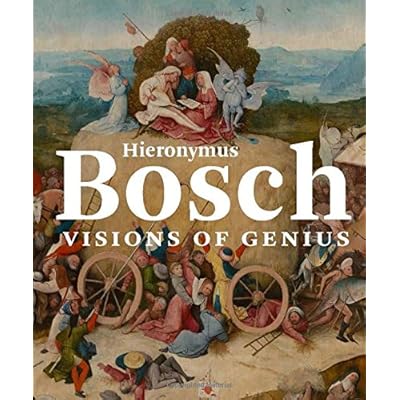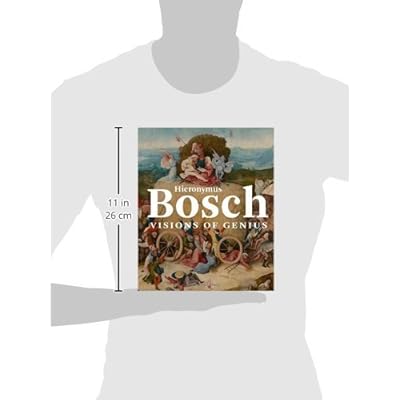Hieronymus Bosch: Visions of Genius
Category: Books,Arts & Photography,Individual Artists
Hieronymus Bosch: Visions of Genius Details
Review "Lushly illustrated with descriptions of the works . . . [in] reader-friendly prose."—Nina Siegal, New York Times Book Review"Anyone interested in Renaissance art or in the major themes of salvation and damnation that often dominated art and literature throughout Christian history should love this book. The images are absolutely striking."—Richard D. Weigel, Bowling Green Daily News"The catalog for the Noordbrabants Museum’s exhibition . . . addresses the general reader engagingly."—Ingrid D. Rowland, New York Review of Books"This wonderfully approachable monograph will delight readers who know and love Bosch’s paintings, as well as those unfamiliar with them or with his equally remarkable drawings. Its splendid illustrations include numerous enlarged details that enable an understanding that even seeing the paintings in person cannot offer—and Bosch’s work is very rich in small-scale events. . . . Excellently written for the intelligent, generalist reader."—Andrea Kirsh, Artblog Read more Book Description Published to accompany the 500th anniversary of the artist’s death, this accessible catalogue accompanies the largest exhibition ever held on Hieronymus Bosch. Read more See all Editorial Reviews

Reviews
To mark the 500th anniversary of the death of Hieronymus Bosch (1460 - 1516), s'Hertogenbosch, the city in the Netherlands where he was born and lived and worked most of his life, staged the largest Bosch retrospective ever. The exhibit closed two weeks ago (it is now headed for the Prado, in Madrid). It contained 20 of the 25 painted panels attributed to Bosch, as well as 19 of the 25 drawings judged to be his, along with additional works from his workshop or by his followers. The exhibition, which culminated the multi-year Bosch Research and Conservation Project, is the basis for this splendid book.The book contains 51 reproductions of the "catalogue" works of art in the exhibition, along with individual textual discussion of each. In many cases, blow-ups of details are also included. In addition, there are reproductions of related works of art as well as the few works of Bosch not included in the exhibition. (Foremost of those not on display in s'Hertogenbosch was "The Garden of Earthly Delights", which the Prado declined to loan to the show. It did, however, contribute "The Haywain Triptych", the first time in 450 years that work had left Madrid. For compleatists, the book nonetheless does include a full-page reproduction of "The Garden of Earthly Delights".)Two things stand out about Bosch's artwork: the stories they tell and the myriad of striking or enigmatic details. Many of those details are freakish little monsters, part human and part animal, with re-arranged, missing, or fanciful body parts. Examining the paintings closely, I see such things as a man urinating against the corner of a house, swinging bells with humans as their clappers, and birds flying out the rear end of a bent-over person (a repeated motif -- what could it signify?). Owls seem ubiquitous, watching and brooding over everything. As for the stories, the central one, probably, is that each and every individual person is responsible for his or her fate -- heaven or hell.The textual discussions augment the illustrations, congenially and informatively. They are not in the least pedantic. The authors give appropriate background and point out some of the interesting details, but they don't prattle on, inducing catatonia. In their more general discussion, they make the point that s'Hertogenbosch in the late fifteenth century was a second-tier city in the region (after Brussels, Antwerp, Utrecht, Amsterdam, Bruges, and Ghent). It was, they write, "precisely the 'splendid isolation' resulting from the lack of local tradition and of strict conventions that allowed [Bosch] to arrive at his distinctive and original work."Thoroughly distinctive and original it is. It also is, to me, more captivating than any other artwork of its era.



